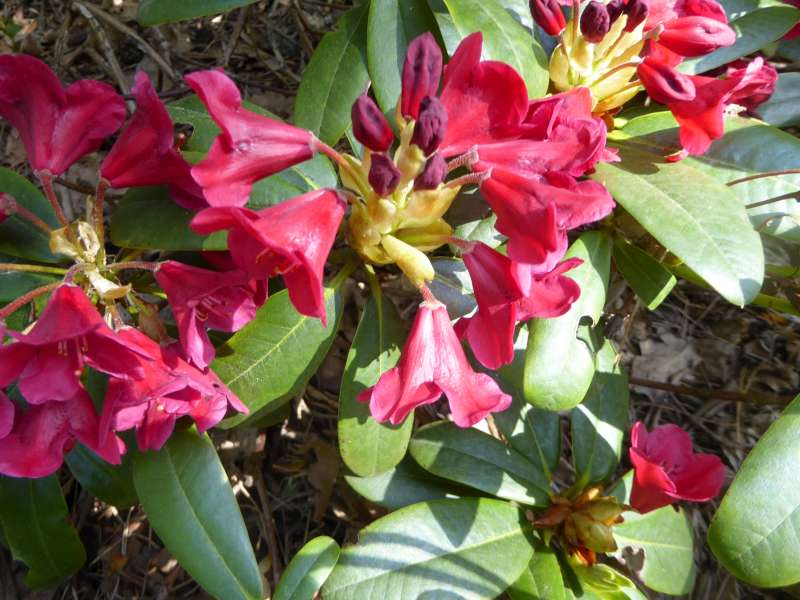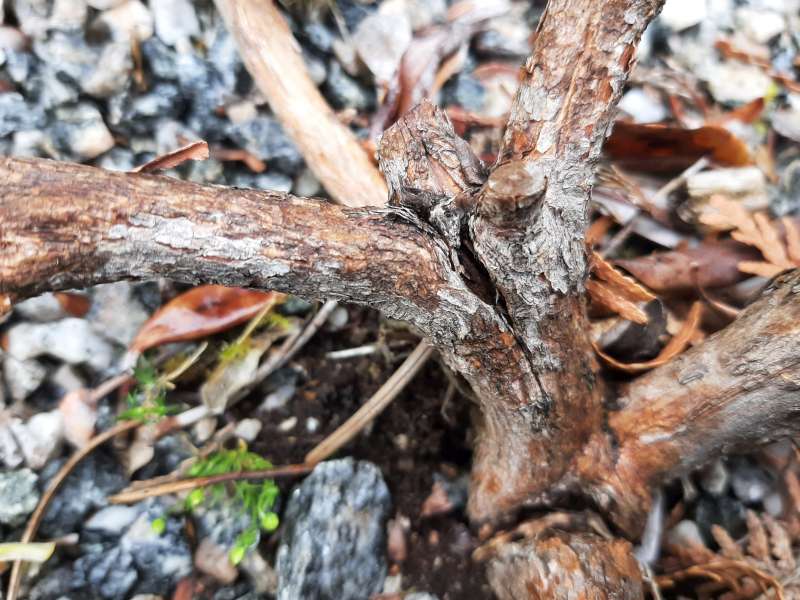Rhododendron sanguineum var. didymoides
Billeder af Rhododendron sanguineum var. didymoides
Beskrivelse
R. sanguineum var. didymoides (Neriiflora). R. sanguineum ssp. sanguineum var. didymoides. Blomsten er hvid til pink eller gul med pink, blomsterknopskæl falder ikke af. Frugtknuden med kirtelhår.
● R. sanguineum var. didymoides frø, Bremen. Foto: Hans Eiberg
Trees and Shrubs Online; R. sanguineum Franch.
Dwarf shrub, 0.3–1.5 m. Leaves 3–8 × 1.5–3.2 cm, elliptic to obovate, lower surface covered with a continuous compacted silvery to greyish indumentum composed of rosulate hairs; petioles floccose when young, rarely also glandular, soon glabrescent. Flowers 3–6, in a tight truss; calyx 3–10 mm, coloured, cupular when well-developed; corolla fleshy, white or yellow to pink or crimson to blackish red, shortly tubular-campanulate, with nectar pouches, 25–35 mm; ovary tomentose to stalked-glandular, abruptly contracted into the glabrous style. Royal Horticultural Society (1997)
Distribution China SE Tibet, NW Yunnan
Habitat 3,000–4,500 m
RHS Hardiness Rating H5
Conservation status Least concern (LC)
An evergreen shrub up to 6 ft high; young stems clad with greyish hairs; bud-scales deciduous. Leaves obovate, elliptic or oblong, obtuse or rounded at the apex, cuneate at the base, up to 21⁄2 in. long and 1 in. wide, of leathery texture, dull medium green above, undersurface coated with a thin, continuous indumentum of branched hairs; petiole about 5⁄8 in. long. Flowers opening in May, in clusters of three to six. Calyx variable in size, up to 3⁄8 in. long but sometimes reduced to a mere rim. Corolla bell-shaped, about 11⁄2 in. long, five-lobed, crimson, with nectar-pouches at the base. Stamens ten, with glabrous or downy filaments. Ovary densely tomentose, not glandular; style glabrous. (s. Neriiflorum ss. Sanguineum)
Native of N.W. Yunnan and S.E. Tibet; discovered by the Abbé Soulié on the Se La, Mekong-Salween divide, in 1895; introduced by Forrest in about 1917. In its natural habitat it is a small shrub, usually under 4 ft high, occurring in open situations at 12,000 to 14,000 ft. It is hardy, but of little value in gardens, being very shy-flowering in most forms.





